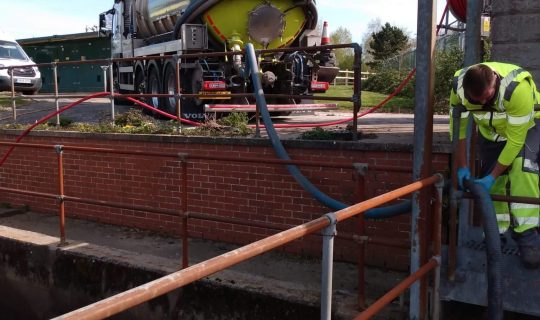Hand soap vs Hand Sanitising gel which is the most effective?
Hand soap vs Hand Sanitising gel which is the most effective is an ongoing question that many people in our industry ask on a regular basis. Griffin Toilet Hire have site toilets with HSE compliant sinks and soap and also luxury toilet trailers with sinks and soap. However our event toilets where there is not always a need for sinks have a supply of anti bacteria hand sanitising gel dispensers for guests to use.
So lets breakdown the effectiveness of soap vs sanitising products.
Hand Sanitising Gel.
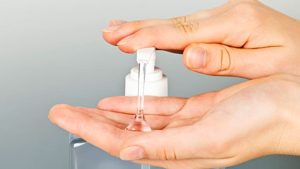
Hand Sanitising Gel
First of all, not all hand sanitising products are equal
There are a million different kinds of hand sanitising gels, foams, alcohol-based, all-natural, ones that smell nice, and more. The type of hand sanitising product really does matter depending the active ingredient and its concentration
In order for a sanitising product to be effective, it has to reduce a certain amount of microbes from a surface. Anything with at least 62% ethyl alcohol will start reducing the germs on your hands. A 10,000 fold reduction with mean a sanitising product is reducing about 99% of germs on your hands and this is enough to prevent illness.
You should use enough hand sanitiser gel to completely wet your hands and wait 30 seconds for it to dry.
Alcohol free sanitising products or anything that reads “with natural ingredients” may kill some germs but not enough.
Hand sanitising is pretty effective, but alcohol-based sanitising products don’t kill everything. Highly contagious stomach bug’s like Norovirus, and diarrhea-causing bacterium Clostridium difficile don’t get broken down and killed by the alcohol compounds in sanitising products like other germs do.
The good news is that you are less likely to encounter these pathogens — unless you work in a hospital, where Norovirus and Clostridium difficile is spread easily.
People currently are usually more concerned about cold and flu viruses, and those are killed with alcohol-based hand sanitising products. But if you have any visible dirt or grime or sticky stuff on your hands, the sanitising gel probably won’t remove it, which is not ideal as the germs are not all removed.
Hand Washing with soap.
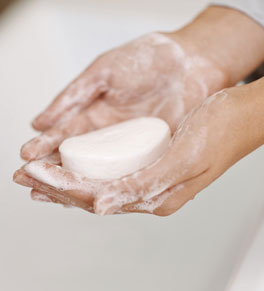
Hand Soap
Proper hand washing is the gold standard. Why is it better than hand sanitising?
Data show that they’re both effective at reducing germs, but hand washing not only actually kills germs, but it also physically removes much dirt, debris, and spores that could make you sick.
So in contrast to hand sanitiser, washing your hands does also remove those pathogens like Norovirus, Germs and bacteria.
It is not the just the soap alone that kills the germs, but the friction of lathering and washing away the organisms that makes hand washing more effective. Washing with soap has been shown to be better than washing with water alone because it loosens the germs’ ability to grip to the hands, making them easier to rinse away.
BUT, you need to wash your hands properly — which means lathering with soap for 20 seconds.
- Run your hands under clean, running water (hot or cold).
- Lather up your hands and fingers with soap.
- Scrub for 20 seconds (or as long as it takes to sing the “Happy Birthday” song twice).
- Rinse your hands with clean water.
- Dry your hands completely using a clean towel, a dryer, or let them air-dry.
People don’t think about it, but hand drying is a very important step — if your hands are still wet, you will pick up and transmit germs very easily. So don’t leave with wet hands or just wipe them on your trousers and air-drying is better if you don’t have a clean towel.
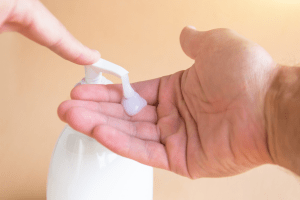
Liquid Hand Soap
Also, any soap will work as long as it lathers and successfully washes off the dirt and grime. Antibacterial soap doesn’t have any added benefit, and may actually promote antibiotic-resistant germs.
But hand sanitiser products are still a good option if you can’t wash your hands in the moment or you don’t have access to clean water.
What matters most is that you remove any bad germs that have the potential to cause disease that has the biggest impact in terms of your health.
Bottom line: Keeping your hands clean — whether that’s through sanitising or washing — will help prevent illness and keep you healthy.
And in our line of work we already provide disposable gloves and hand wash in our vehicles as well as soap in our welfare areas for all the team and visitors to use.
Fun Fact below:
A school in the USA conducted an experiment on bread to see which was more effective and compared the hand wash products with other surfaces that carry germs – take a look at the photo below to see the results.
The first on the left is an untouched slice of bread. The second is Dirty Hands. The centre slice is after washing with hand soap and water. The 4th along is with hand sanitising gel and the last (furthest on the right) is a wipe over of someones lap top – yuk!
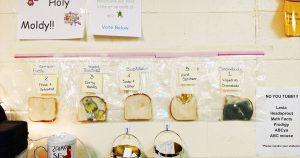
Bread Experiment

